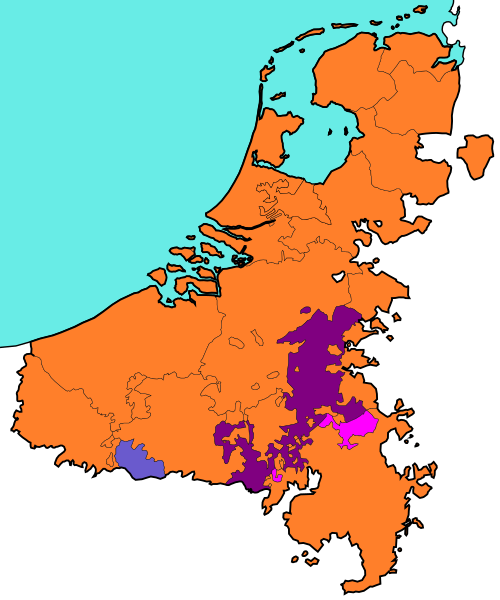Habsburg Netherlands
Habsburg Netherlands was the part of the Low Countries ruled by the House of Habsburg. After Mary of Burgundy died in 1482, the Low Countries was inherited by the Habsburgs. Emperor Charles V divided the House of Habsburg into two parts. The Spanish branch ruled the Habsburg Netherlands. After the Dutch Revolt, the northern provinces of the Habsburg Netherlands became independent.
Habsburg Netherlands | |||||||||||||||
|---|---|---|---|---|---|---|---|---|---|---|---|---|---|---|---|
| 1482–1797 | |||||||||||||||
 {| cellspacing="0" cellpadding="0" class="" style="background-color: transparent; width: 100%"
| width="50%" align="" valign="" | The Low Countries in 1560. Habsburg Netherlands Prince-Bishopric of Liège Principality of Stavelot-Malmedy Prince-Bishopric of Cambrésis |} | |||||||||||||||
| Status | Personal union of Imperial fiefs within Empire | ||||||||||||||
| Capital | De facto: Mechelen till 1530, afterwards Brussels | ||||||||||||||
| Common languages | |||||||||||||||
| Religion | == Habsburg Netherlands Media ==
| ||||||||||||||
| Government | Monarchy | ||||||||||||||
| Historical era | Early modern period | ||||||||||||||
• | 1482 | ||||||||||||||
• Incorporated into Burgundian Circle | 1512 | ||||||||||||||
| 1549 | |||||||||||||||
• Inherited by Habsburg Spain | 1556 | ||||||||||||||
| 30 January 1648 | |||||||||||||||
| 7 March 1714 | |||||||||||||||
| 18 September 1794 | |||||||||||||||
• | 17 October 1797 | ||||||||||||||
| ISO 3166 code | NL | ||||||||||||||
| |||||||||||||||



